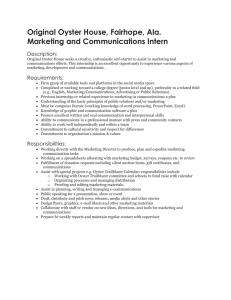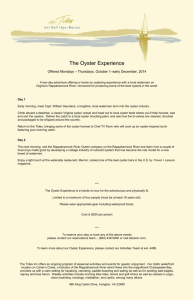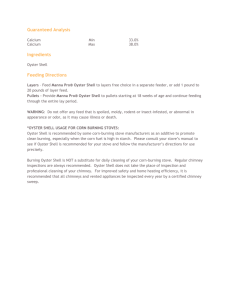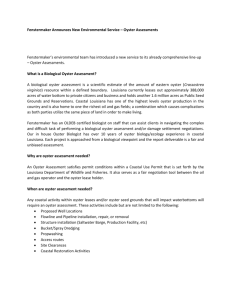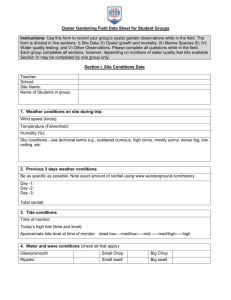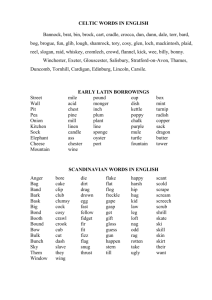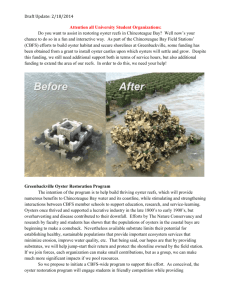The Oyster`s Lifecycle
advertisement
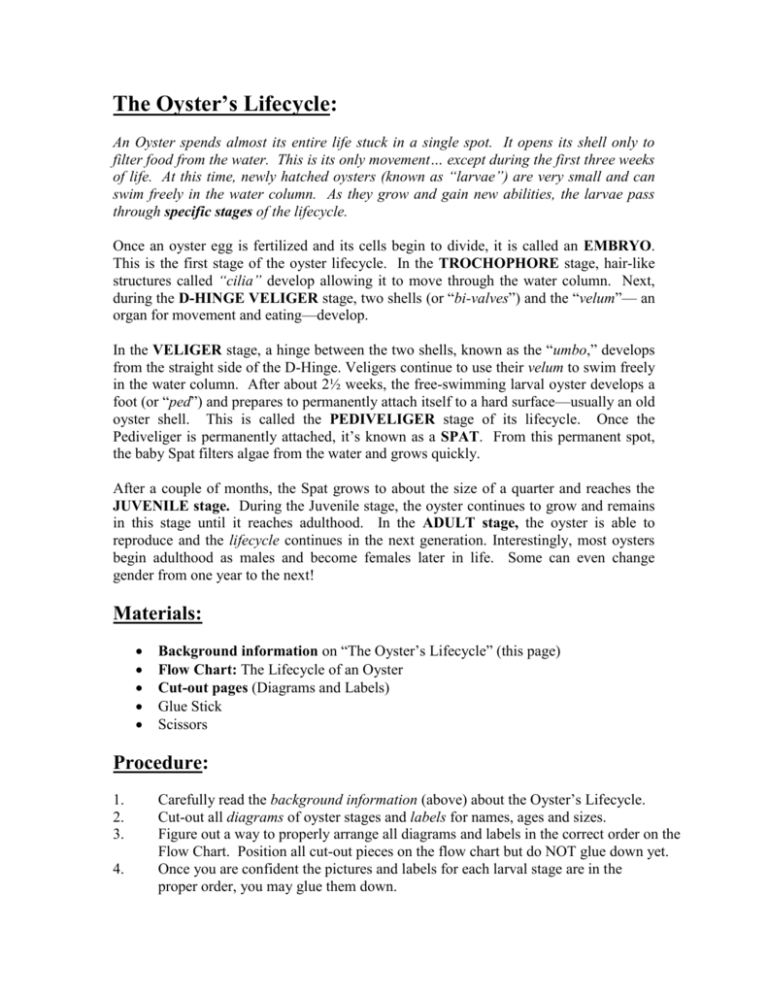
The Oyster’s Lifecycle: An Oyster spends almost its entire life stuck in a single spot. It opens its shell only to filter food from the water. This is its only movement… except during the first three weeks of life. At this time, newly hatched oysters (known as “larvae”) are very small and can swim freely in the water column. As they grow and gain new abilities, the larvae pass through specific stages of the lifecycle. Once an oyster egg is fertilized and its cells begin to divide, it is called an EMBRYO. This is the first stage of the oyster lifecycle. In the TROCHOPHORE stage, hair-like structures called “cilia” develop allowing it to move through the water column. Next, during the D-HINGE VELIGER stage, two shells (or “bi-valves”) and the “velum”— an organ for movement and eating—develop. In the VELIGER stage, a hinge between the two shells, known as the “umbo,” develops from the straight side of the D-Hinge. Veligers continue to use their velum to swim freely in the water column. After about 2½ weeks, the free-swimming larval oyster develops a foot (or “ped”) and prepares to permanently attach itself to a hard surface—usually an old oyster shell. This is called the PEDIVELIGER stage of its lifecycle. Once the Pediveliger is permanently attached, it’s known as a SPAT. From this permanent spot, the baby Spat filters algae from the water and grows quickly. After a couple of months, the Spat grows to about the size of a quarter and reaches the JUVENILE stage. During the Juvenile stage, the oyster continues to grow and remains in this stage until it reaches adulthood. In the ADULT stage, the oyster is able to reproduce and the lifecycle continues in the next generation. Interestingly, most oysters begin adulthood as males and become females later in life. Some can even change gender from one year to the next! Materials: Background information on “The Oyster’s Lifecycle” (this page) Flow Chart: The Lifecycle of an Oyster Cut-out pages (Diagrams and Labels) Glue Stick Scissors Procedure: 1. 2. 3. 4. Carefully read the background information (above) about the Oyster’s Lifecycle. Cut-out all diagrams of oyster stages and labels for names, ages and sizes. Figure out a way to properly arrange all diagrams and labels in the correct order on the Flow Chart. Position all cut-out pieces on the flow chart but do NOT glue down yet. Once you are confident the pictures and labels for each larval stage are in the proper order, you may glue them down.
